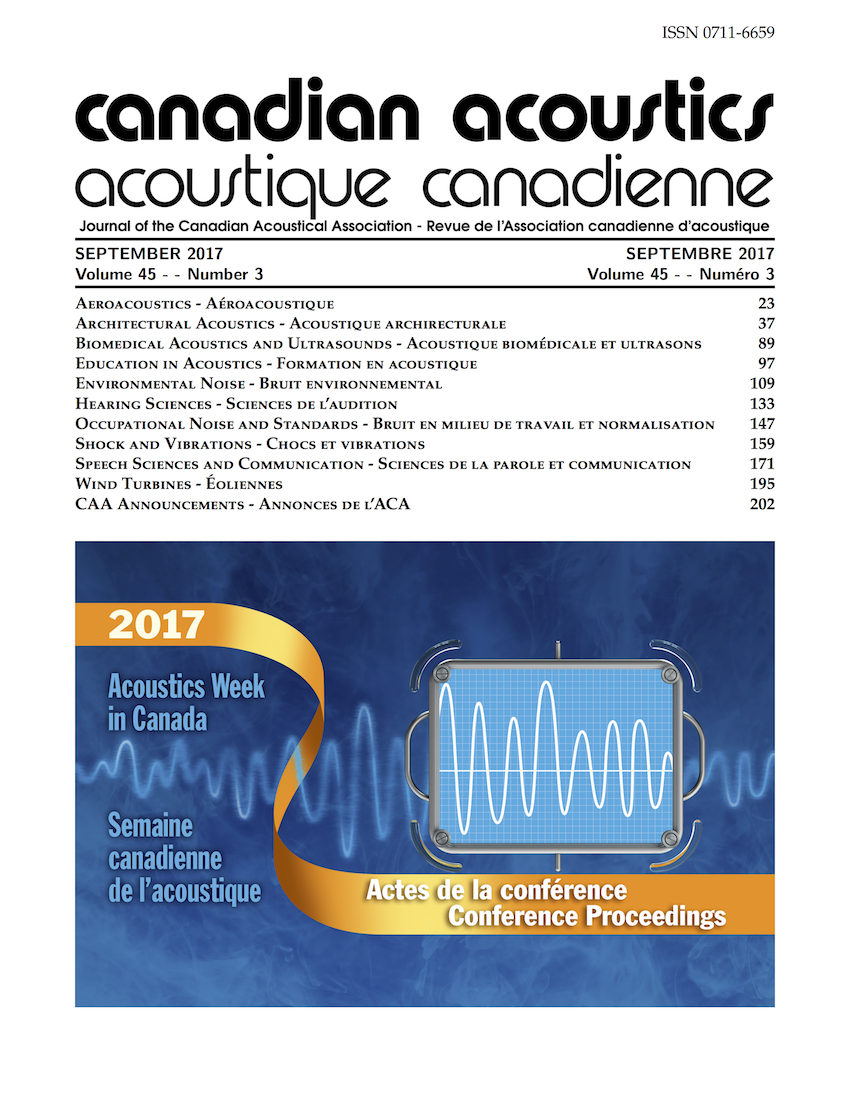Acoustics Specialization for Building Engineers
Abstract
This paper describes an overview of the architectural acoustics specialization program, the acoustics curriculum for building engineers, acoustic lab facilities, and research areas developed at Concordia University. The Building Engineering Program at Concordia University is designed to encompass the body of knowledge pertaining to all aspects of a building with an understanding of their impact on the environment including acoustics. The Department of Building, Civil and Environmental Engineering at Concordia offers undergraduate and graduate acoustic courses for students who want to pursue a career in architectural acoustics. The program guides students to gain fundamental knowledge in acoustics and analysis skills of indoor environments to achieve optimal acoustic performance in buildings. The acoustic courses cover topics from acoustic principles to professional applications in room acoustics and noise control methods. Laboratory experiments and design projects are essential components in these acoustic courses. The design of graduate attributes and learning outcomes used in the assessment of the courses will be described. The experience gained from the assessment process has improved the acoustics curriculum at Concordia University. Lastly, effective teaching strategies to deliver acoustic concepts to building engineering students will be discussed.
Additional Files
Published
How to Cite
Issue
Section
License
Author Licensing Addendum
This Licensing Addendum ("Addendum") is entered into between the undersigned Author(s) and Canadian Acoustics journal published by the Canadian Acoustical Association (hereinafter referred to as the "Publisher"). The Author(s) and the Publisher agree as follows:
-
Retained Rights: The Author(s) retain(s) the following rights:
- The right to reproduce, distribute, and publicly display the Work on the Author's personal website or the website of the Author's institution.
- The right to use the Work in the Author's teaching activities and presentations.
- The right to include the Work in a compilation for the Author's personal use, not for sale.
-
Grant of License: The Author(s) grant(s) to the Publisher a worldwide exclusive license to publish, reproduce, distribute, and display the Work in Canadian Acoustics and any other formats and media deemed appropriate by the Publisher.
-
Attribution: The Publisher agrees to include proper attribution to the Author(s) in all publications and reproductions of the Work.
-
No Conflict: This Addendum is intended to be in harmony with, and not in conflict with, the terms and conditions of the original agreement entered into between the Author(s) and the Publisher.
-
Copyright Clause: Copyright on articles is held by the Author(s). The corresponding Author has the right to grant on behalf of all Authors and does grant on behalf of all Authors, a worldwide exclusive license to the Publisher and its licensees in perpetuity, in all forms, formats, and media (whether known now or created in the future), including but not limited to the rights to publish, reproduce, distribute, display, store, translate, create adaptations, reprints, include within collections, and create summaries, extracts, and/or abstracts of the Contribution.


